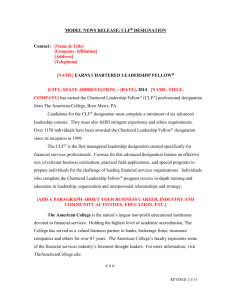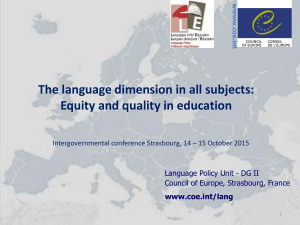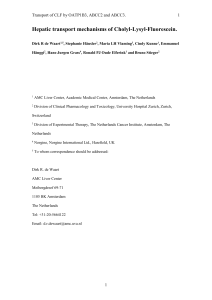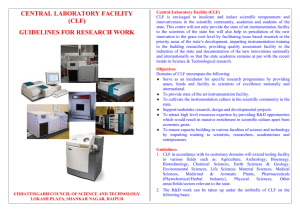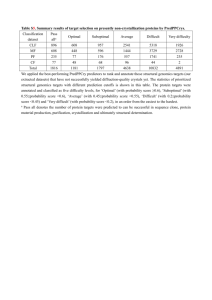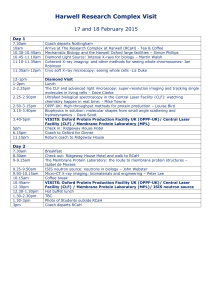CLF
advertisement
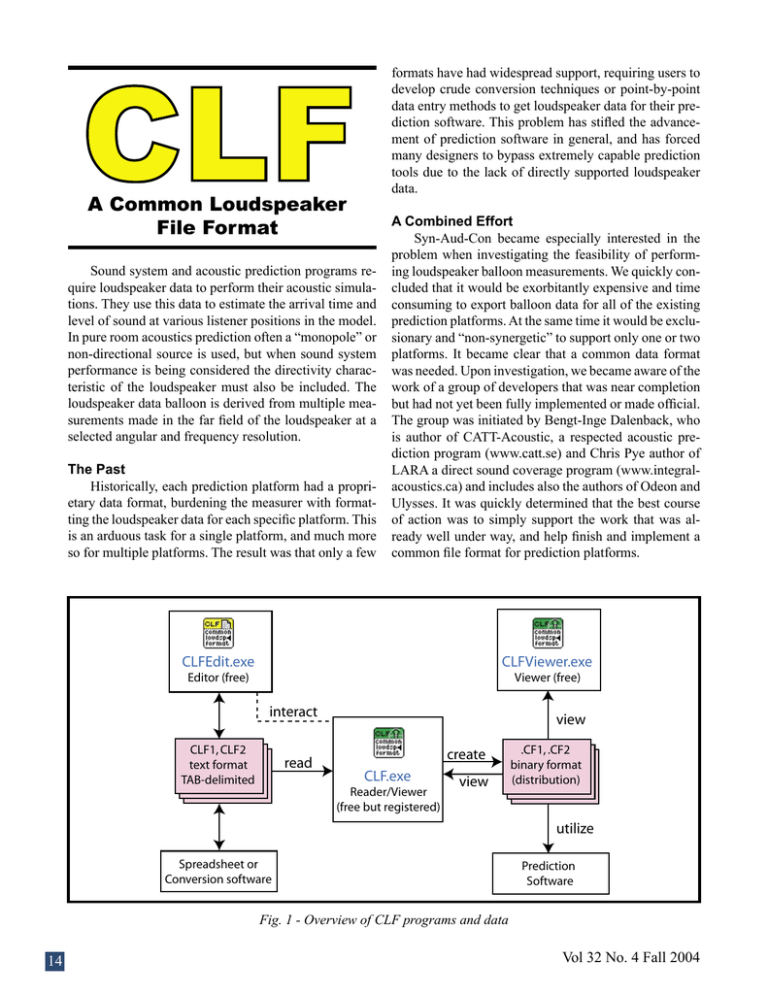
CLF formats have had widespread support, requiring users to develop crude conversion techniques or point-by-point data entry methods to get loudspeaker data for their prediction software. This problem has stifled the advancement of prediction software in general, and has forced many designers to bypass extremely capable prediction tools due to the lack of directly supported loudspeaker data. A Common Loudspeaker File Format The Past Historically, each prediction platform had a proprietary data format, burdening the measurer with formatting the loudspeaker data for each specific platform. This is an arduous task for a single platform, and much more so for multiple platforms. The result was that only a few A Combined Effort Syn-Aud-Con became especially interested in the problem when investigating the feasibility of performing loudspeaker balloon measurements. We quickly concluded that it would be exorbitantly expensive and time consuming to export balloon data for all of the existing prediction platforms. At the same time it would be exclusionary and “non-synergetic” to support only one or two platforms. It became clear that a common data format was needed. Upon investigation, we became aware of the work of a group of developers that was near completion but had not yet been fully implemented or made official. The group was initiated by Bengt-Inge Dalenback, who is author of CATT-Acoustic, a respected acoustic prediction program (www.catt.se) and Chris Pye author of LARA a direct sound coverage program (www.integralacoustics.ca) and includes also the authors of Odeon and Ulysses. It was quickly determined that the best course of action was to simply support the work that was already well under way, and help finish and implement a common file format for prediction platforms. ����������� ������������� ������������� ������������� Sound system and acoustic prediction programs require loudspeaker data to perform their acoustic simulations. They use this data to estimate the arrival time and level of sound at various listener positions in the model. In pure room acoustics prediction often a “monopole” or non-directional source is used, but when sound system performance is being considered the directivity characteristic of the loudspeaker must also be included. The loudspeaker data balloon is derived from multiple measurements made in the far field of the loudspeaker at a selected angular and frequency resolution. �������� ���������� ����������� ������������� ���� ���� ������ ������� ������������� ��������������������� ���� ���������� ������������� �������������� ������� �������������� ������������������� ����������� �������� Fig. 1 - Overview of CLF programs and data 14 Vol 32 No. 4 Fall 2004 The Details The CLF format is based on a flexible TAB-delimited text format that is created from measurements. Currently 10°,1/1-octave (CLF1) and 5°,1/3-octave (CLF2) are supported. The CLF reader software parses the text file, displays the result for verification, and saves the data to a secure and traceable binary distribution file (CF1 or CF2). The binary format can then be read by a free dedicated viewer as well as by any prediction platform that wants to support the format. For an overview see Fig. 1. Some benefits of the format include: 1. Prediction platform-independent. 2. Secure where the data origin can be traced. 3. Supported by a freeware data viewer that lets the CLF format act as an electronic data sheet. 4. The flexibility to support any future standard for loudspeaker data. And maybe most importantly: 5. A fresh look at what we measure and how we measure it with regard to characterizing loudspeakers in a meaningful way for acoustic predictions. It was also important that the data for the CLF be derived from the anechoic impulse response measurement made at each angular position around the loudspeaker. This assures that future refinements, including higher frequency resolution and support of phase information could be implemented without the need to re-measure devices that had previously been measured. It would Fig. 2 - The freeware CLF Viewer serves as an electronic data sheet. Newsletter 15 though, be necessary to decide on an angular resolution, since future formats cannot fill-in data that is not there (although some interpolation algorithms may be applicable in some instances). Fully-measured Balloons A major benefit of the CLF is that it does not allow balloon data to be interpolated from horizontal and vertical polars, which is the easiest way to get balloon data from a minimum number of measurements. While some physically symmetrical devices might be characterized by this approach, the effects of edge diffraction and crossover behavior are largely missed. Since these effects are very significant to direct field predictions, we feel that fully measured data balloons should be used. It is likely that many prediction platform users are operating under the assumption that the data balloons are always fully measured rather than interpolated from polars. With the CLF however, symmetry and interpolation information is not lost in translation since it is stored in the binary format and can optionally be shown by the CLF Viewer. The CLF Viewer The freeware CLF Viewer has become a useful training tool in Syn-Aud-Con seminars. It is a small, self contained, efficient application that displays the major specifications of loudspeakers. The CLF format includes information fields that allow details about how the data was gathered to be included. This clarification serves to remind users to not blindly compare numbers when comparing loudspeakers, but to think about how the data was collected and what it represents. The emphasis of the CLF and the CLF Viewer is not comparison shopping, but to aid in determining the suitability of a loudspeaker for a specific application. However, such a comparison software could well be created based on the CLF format but the CLF group has not seen this as their task but only to define the format and write the tools that manage and display the data. The Common Loudspeaker File Format will be supported by CATT-Acoustic, LARA, Ulysses, and Odeon. We are hopeful that with time other platforms will join this group. An open format also makes it possible to use Fig. 3 - The CLF Editor allows the text file to be viewed and edited. 16 Vol 32 No. 4 Fall 2004 realistic directivity data in research on new prediction methods and array modeling. A natural question is how the CLF initiative relates to impulse response (IR) based format under development in the AES SC-04-01 working group. Due to the structure of the CLF format it can be a useful and independent addition to the IR-based format since CLF files can be created from these IRs and act as a “front end” for viewing the data in a condensed form as well as being used by those prediction software that do not use the IR format directly. Since the CLF has many options for giving background information about the data, it can clearly specify that it is based on the raw IR AES-format data and also where this data is located. As indicated above, measurement of IRs is the most flexible way since it allows for future re-evaluation of the data, however, raw IRs are not very useful for display until they have been condensed into balloons or polar diagrams. The CLF format can serve this purpose in a software platform and manufacturer independent manner. More Information The web site for the Common Loudspeaker File Format is www.clfgroup.org. A demo CLF Viewer can be downloaded from this location, along with some sample data. The purpose of making a demo viewer available now is to allow for collection of final feedback from manufacturers and others involved in measurements so that when the first final format version is released all major issues have been addressed. When the final version has been released a longer SAC Newsletter article will detail and discuss the contents of the text format. At this time also the binary format specification will be available to developers. Up till that point interested parties can contact the CLF group and obtain the current text format specification and register the reader software. The group also maintains a dedicated mailing-list for CLF-related discussions. It is our hope that several manufacturers will put one or more of their models into CLF format also during the demo period so that the potential of an open multi-platform format and a free viewer will be clear. A growing list of supporting loudspeaker manufacturers will be included on the site as it develops. www.clfgroup.org Newsletter 17
